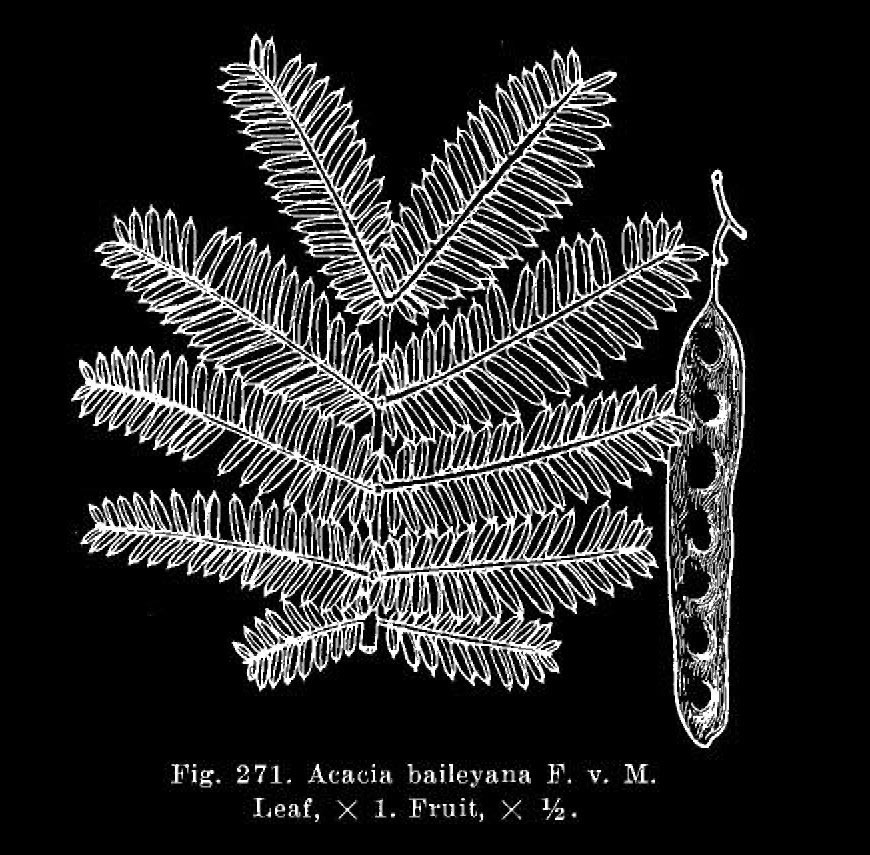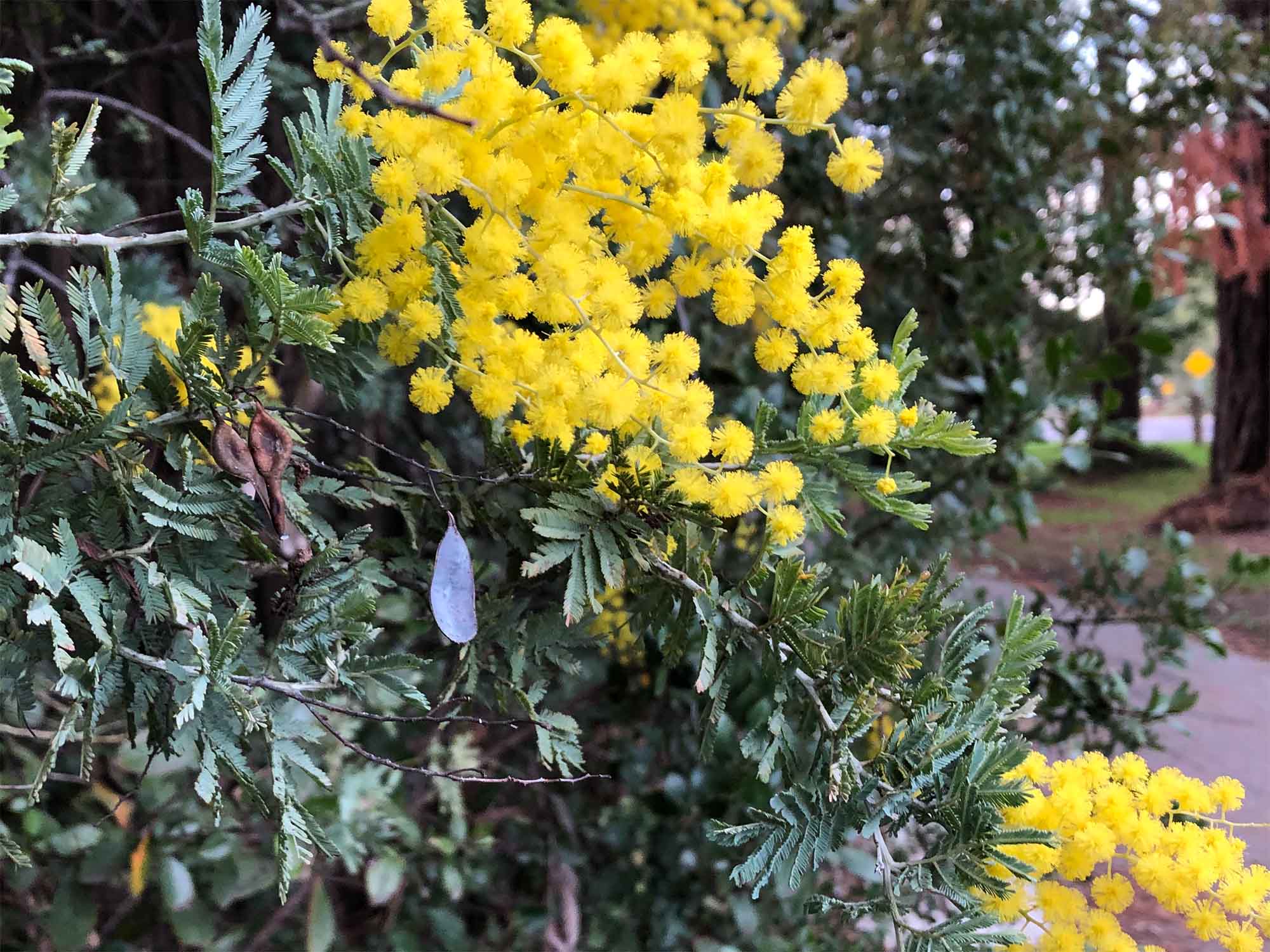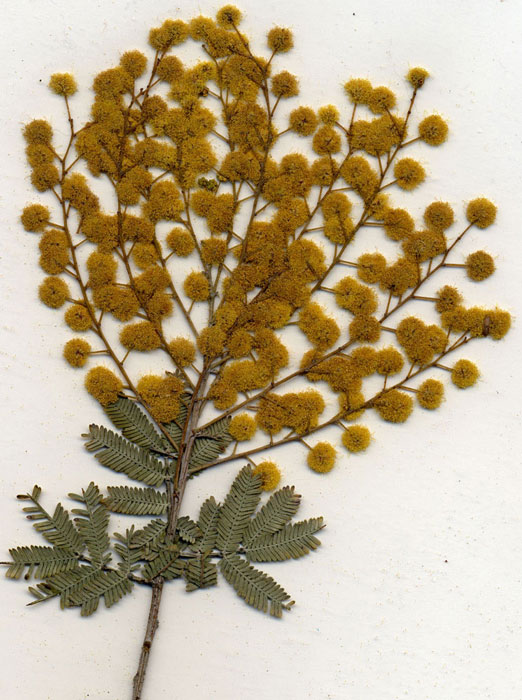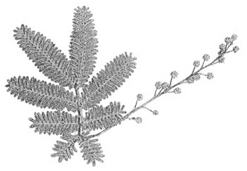Acacia baileyana
 Cootamundra wattle
Cootamundra wattle
A shapely tree with silvery foliage and masses of brilliant golden flowers in late winter. It can be separated from silver wattle by having four (occasionally five or six) pairs of pinnae (the major segments into which the leaf is divided). Each pinna is further subdivided into many tiny silvery flat pinnules about ¼ inch long. Just below the point of attachment of each pair of pinnae there is a gland with a dark spot that is visible from the upper surface of the pinnae.

This small tree is a candidate, with Cassia eremophila, for first prize among yellow-flowered trees. See it in the thicket at the northwest corner of the intersection of Peter Coutts Road and Raimundo Way; this individual has six pairs of pinnae, which is rather unusual. Two are tangled among other trees on the right side of 853 Mayfield Avenue. A single tree, its low trunk split down the middle, sprawls out on the southwest side of Lake Lagunita, just southeast of the intersection of the paths there (map pin).
Several more near the intersection of Escondido Road and Blackwelder Court were removed 2017 due to construction. Specimens reported in 2005 at 880 Lathrop Drive and south of The Knoll were removed.
Name derivation: Acacia – Greek akis, a sharp point; baileyana – after A.M. Bailey (1827–1915), Australian botanist.
About this Entry: The main text of this entry is from the book Trees of Stanford and Environs, by Ronald Bracewell, published 2005. Missing locations noted; Peter Coutts specimen added; Lake Lag specimen description elaborated; all locations up to date (Feb 2018, SP). Mayfield pair added; edits (Aug 2024, SP).






